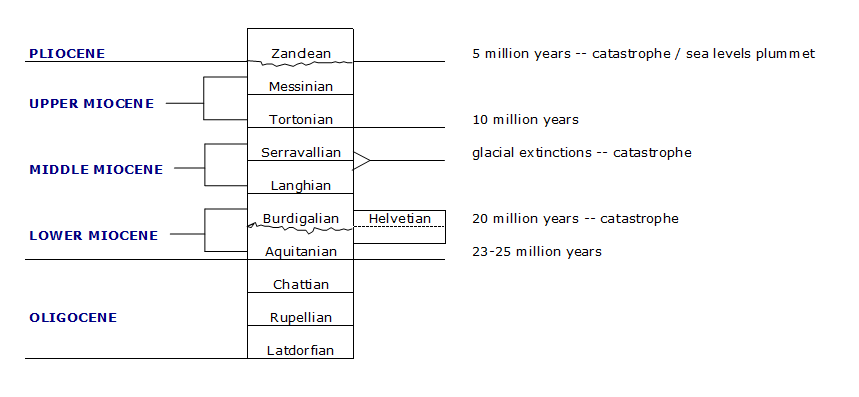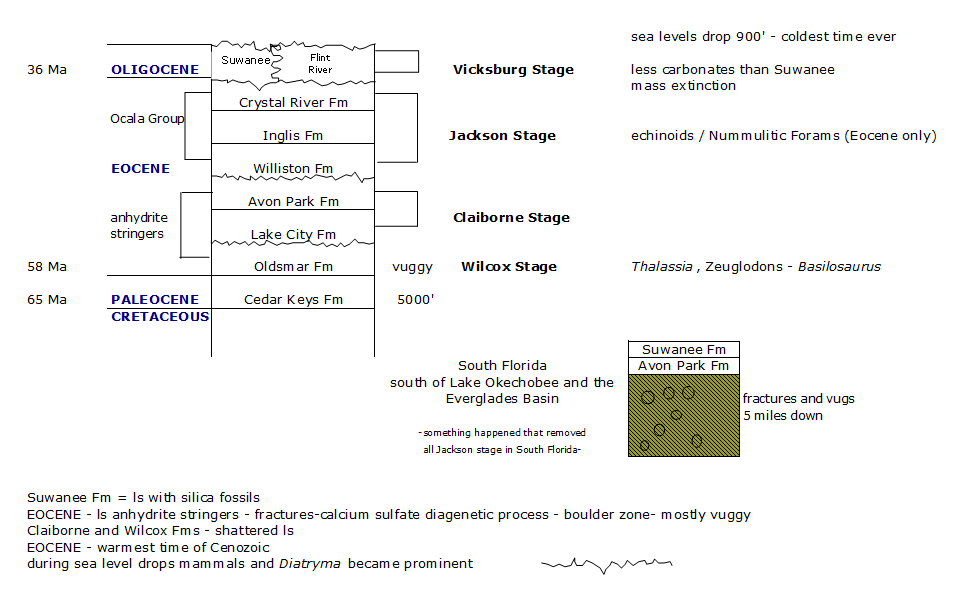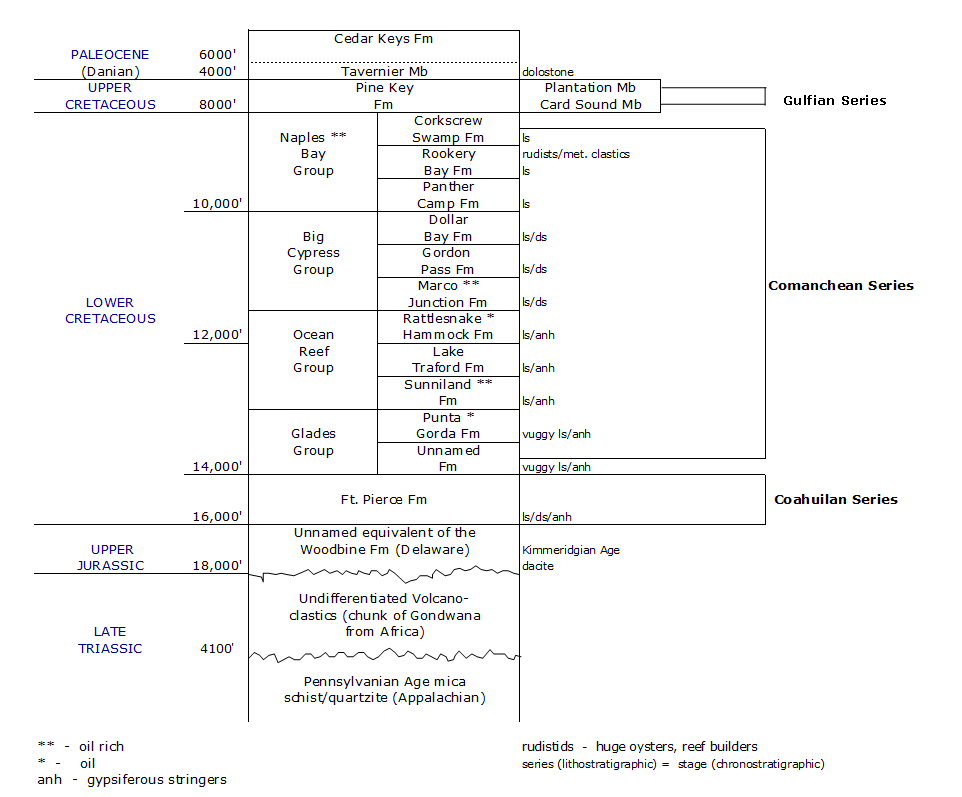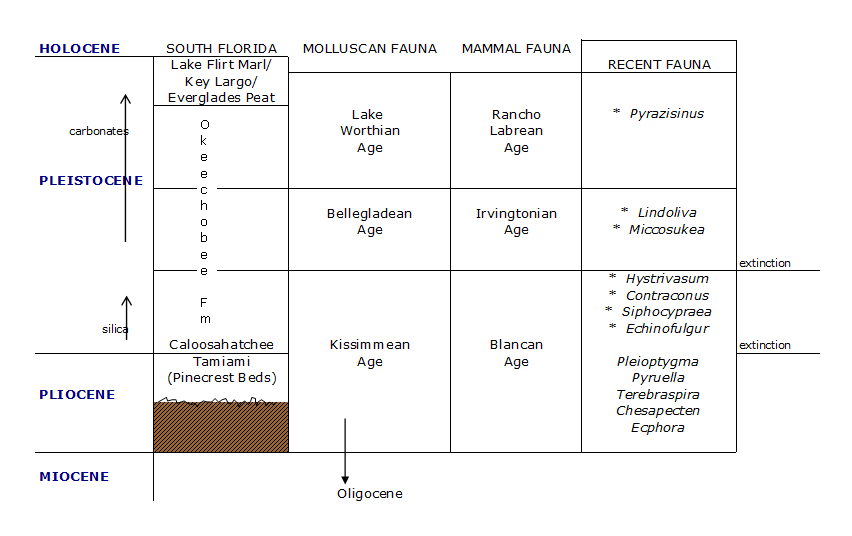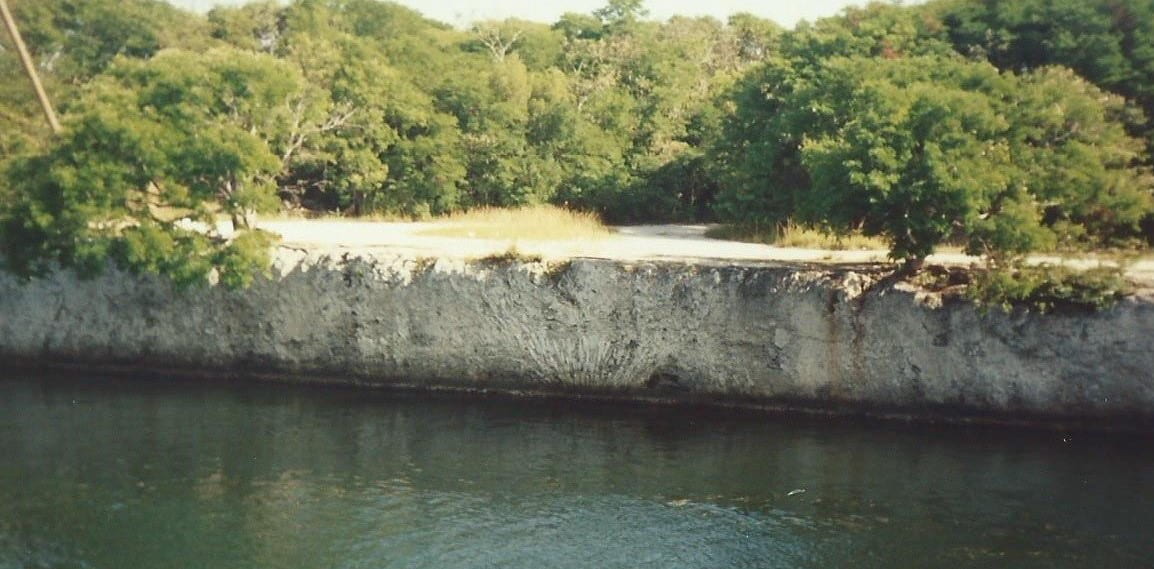
Florida Geological Formations & Faunizones
The basement rocks of Florida were once part of other continents. During the early part of the Cenozoic Era, Florida was submerged under a warm, shallow, ocean which explains why our entire state has hundreds to thousands of feet of limestone beneath it. Land emerged from the ocean as sea level fell during the Oligocene Epoch. During the later part of the Cenozoic Era, quartz sand and clays were transported to Florida, via rivers and marine currents, from the Appalachian Mountain belt as it eroded over millions of years.
Florida geologic strata are divided into formations. Formations are the basic rock units used in stratigraphy, the branch of geology that deals with the layers of sedimentary rock that have accumulated over geologic time. A geological formation, or Formation, is a body of rock having a consistent set of physical characteristics (lithology) that distinguish it from adjacent bodies of rock, and which occupies a particular position in the layers of rock exposed in a geographical region (the stratigraphic column). It is the fundamental unit of lithostratigraphy, the study of strata or rock layers.
A formation must be large enough that it can be mapped at the surface or traced in the subsurface. Formations are otherwise not defined by the thickness of their rock strata, which can vary widely. They may consist of a single lithology (rock type), or of alternating beds of two or more lithologies, or even a heterogeneous mixture of lithologies, so long as this distinguishes them from adjacent bodies of rock. Formations may be combined into Groups of strata or divided into Members.
For more information on each Formation, visit the Florida Geological Survey website.
(Click on the following Geologic Formation Stratigraphies to see a larger picture.)
Miocene – Alum Bluff Group
Miocene – Chesapeake Group
Miocene – Hawthorn Group
Oligocene → Pliocene
Eocene
Cretaceous
Florida Faunizones
A faunizone is a group of geologic beds deposited during the life span of a particular assemblage of organisms and thus characterized by the fossils of a particular fauna.



